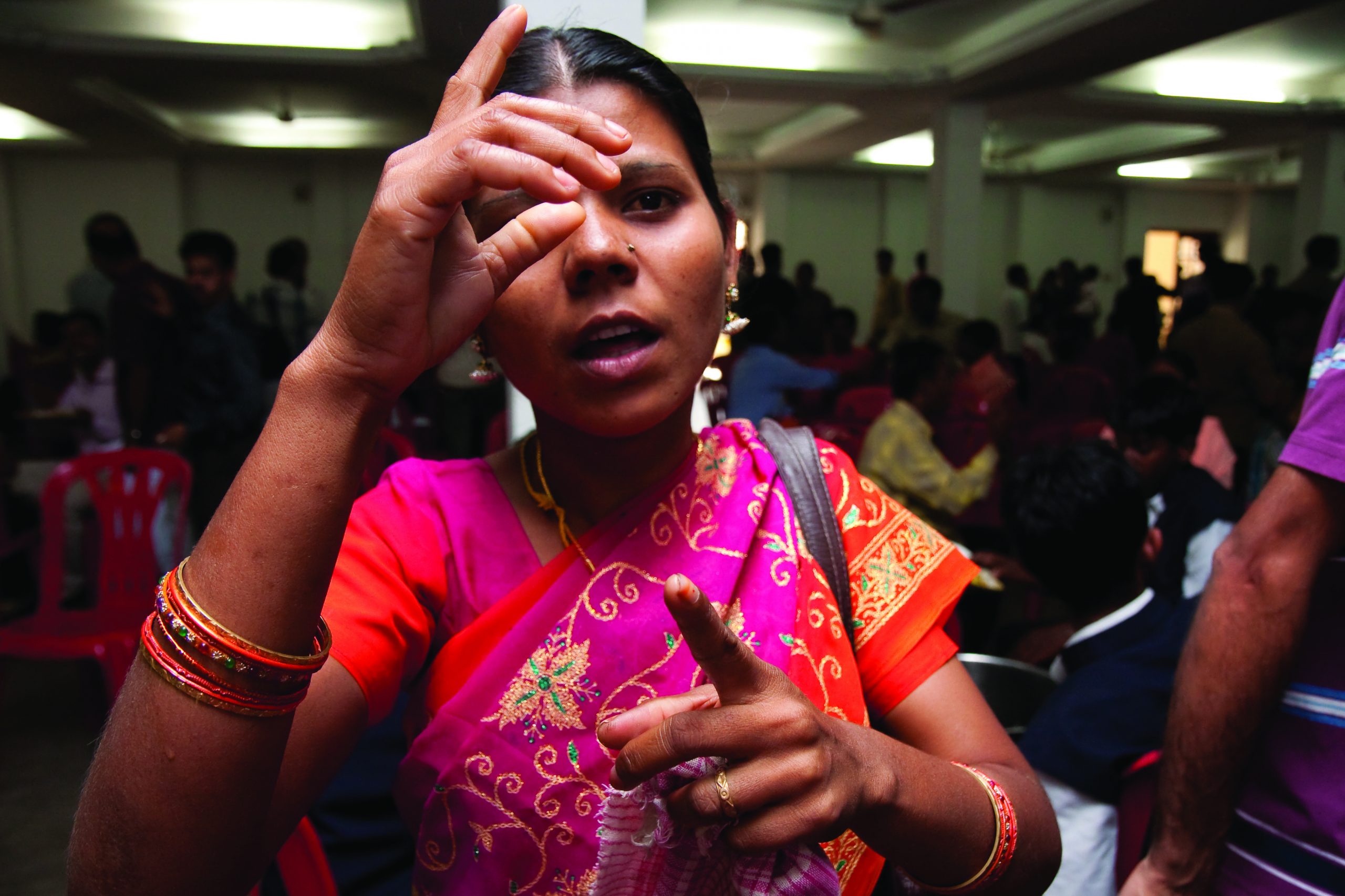Deaf people across the world have a deep, vibrant culture and a sense of unity that often goes unnoticed by the general population. They pride themselves on their ability to adapt, and they actively work to make hearing people aware that Deaf people are just as capable, innovative, and intelligent as any other group. A new trend in the food industry is helping them out.
When Anjan Manikumar opened a tiny restaurant in Toronto, Canada, in July 2014, he had no idea that it would affect people all around the world. Signs, staffed entirely by Deaf employees, provided an immersive sign language experience from its opening year to 2016. It was created in response to the 40% unemployment rate for Deaf Canadians, a rate five times higher than the national average.
Signs didn’t just provide Deaf people with an ideal environment to work. It sought to teach the natives of Toronto more about Deaf culture. Patrons were given sign language “cheat books” to learn how to order in the new language, and the patient wait staff enthusiastically encouraged them in their efforts.
Manikumar’s endeavor went viral, with publicity from large companies such as CBC News, Buzzfeed, and Upworthy, resulting in millions of views online. Despite all its marketing success, however, the business venture did not succeed, and Signs closed its doors in December 2016.
What Manikumar couldn’t know is that though Signs wasn’t the first Deaf-staffed restaurant with a goal for educating the hearing, these other establishments around the world were largely unheard of until Signs’s popularity brought them into the realm of tourism. His efforts also led to the opening of many more businesses and organizations devoted to increasing Deaf awareness. The Elon News Network reported the story of a group of American university students who were inspired to organize a charity event “to raise awareness for the sign language community and the cause.” After spreading the word and raising funds, the students felt “proud to have made a difference.”
You don’t need to scour the news looking for events if you want to experience Deaf dining. If you find yourself craving an immersive cultural experience, you can find them both near and far away.
Bread of Life
(Da Nang, Vietnam)
This Vietnamese-American restaurant and bakery welcomes patrons to brush up on their Vietnamese sign language skills but does allow orders to be given in English or Vietnamese. The family that owns the restaurant refuses to take any kind of salary, instead donating the proceeds to the Deaf community in Danang.
Mirchi and Mime
(Powai, Mumbai, India)
The owner of Mirchi and Mime told The Hindu that “the seed for the idea was sown while I was dining at Signs. . . . I’ve always believed that it is important to generate wealth for society at large and what better way than to start with, by employing those differently-abled.” The restaurant has been a raging success, and the combination of high-quality Indian food and the chance to learn Indian sign language has opened the way to franchise the business. The owners have plans for 21 more locations—18 in India and 3 abroad.
Crepe Crazy
(Austin, Texas, USA)
The Giterman family immigrated to America nearly 30 years ago, bringing America a crepe recipe handed down through Vladimir ‘s Russian family. They started a wildly-popular food truck and soon began plans for a permanent location. In 2014, the restaurant finally opened, fully staffed with Deaf employees. While the primary goal of an all-Deaf staff was to give Deaf people opportunities to work, Michelle Giterman told the Austin American-Statesman that “it’s nice for us to be able to communicate with our workers without worrying about any communication barriers.”
The Deaf Lounge
(London, England, UK)
Nestled within the Seven Sisters in London, England, is a Deaf clubbing experience. Think brighter lights, louder bass, and lessons in British Sign Language. The lounge was originally set up to create an ideal environment for the Deaf, but has since expanded to include the hearing who want to experience a different kind of nightlife.
I Love Coffee
(Cape Town, South Africa)
In a country where South African Sign Language is not recognized as an official language, I Love Coffee’s insistence on sign language is even more impactful than many of the other restaurants’ in this article. Owner Gary Hopkins told EatOut that “it’s more than just coffee shop space; it’s about a mind-shift and correcting the perception that Deaf people are disabled.” The restaurant has instructions painted on the wall behind the counter, explaining how to order.
Mozzeria
(San Francisco, CA, USA)
Mozzeria takes the term “Deaf-owned” to an entirely different level. When Melody and Russ Stein started the pizza restaurant in 2011, they took care to hire Deaf designers and construction workers. After hiring an entirely Deaf staff, the restaurant needed a system of hidden lights to notify the staff of phone calls. But even after this, the real test of an Italian restaurant in San Francisco isn’t the environment, but the quality of the food itself. Melody trained in Italy to create the pizzas and pastas that are considered quite a bit better than the average San Franciscan fare.
No matter where you go, you’re within the reach of a Deaf community, but sometimes the complexity of Deaf culture may make it seem like you’re in an entirely different world. What better way to get acquainted with a new culture than across the dinner table?
—Mandi Diaz


